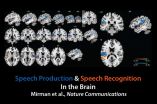(Press-News.org) The destruction of the Brazilian rainforest has slowed significantly. With around 5000 square kilometers annually, the loss is now about 80% lower than in 2004. Led by the Center for Development Research (ZEF) at the University of Bonn, an international team of researchers has evaluated the effectiveness of forest law enforcement in the Brazilian Amazon. In some federal states of the Brazilian Amazon region enforcement has been more effective than in others. The results are presented in the journal "PLOS ONE".
Deforestation of the Amazon rainforest featured in international press headlines for a long time. However, Brazil has made substantial efforts to protect rainforests ecosystem services lately. "Over the last decade, there has been a significant decline in deforestation," says Dr. Jan Börner, the Robert Bosch junior professor at the Center for Development Research (ZEF) of the University of Bonn. According to national statistics, in 2004, 27,772 square kilometers of forest fell victim, primarily to agricultural use; by 2012, deforestation had decreased to 4,656 square kilometers.
Deterrence through high penalties and frequent controls
Rainforest destruction is driven in particular by large cattle ranchers and farmers, but also small-scale agriculture. New roads promote timber extraction and clearing. With an international team of researchers from the University of Freiburg, the Humboldt University in Berlin and the Institute of Applied Economic Research (IPEA) in Brazil, Börner studied around 15,000 forest law violations across the Brazilian part of the Amazon basin to measure how effective the implementation of the rainforest protection was. "Forest law enforcement is, in principle, similar to speed limit control in traffic: the higher the penalties and the more frequent the controls, the greater the deterrence potential", explains Börner.
For the past few years, law enforcement agents were equipped with GPS devices to record the spatial locations of forest law violations. The team of scientists used this data to measure how effective this field-based enforcement was in the various regions: How did deforestation patterns change after field inspections and where? Answering this question requires statistical methods to ensure that inspected locations are compared to appropriate counterfactual scenarios. "Ultimately, there are many rival explanations for why deforestation is slowing down; instead of forest law it could have been economic reasons that induced farmers to convert less forest to agriculture", explains the junior professor.
The study suggests that effective rainforest protection hinges on the physical presence of regulators and the actual delivery of disincentives on the ground. This often involves effective collaboration between enforcement authorities at federal and state levels. Based on those criteria, forest law enforcement was particularly effective in the Brazilian states of Mato Grosso and Pará. "Public prosecutors in these states have dramatically increased the pressure: They maintain black lists of agricultural enterprises that violate the protective provisions", reports the ZEF scientist. "For example, wholesale dealers may then no longer buy products from these sources."
Satellite system reveals illegal deforestation
It is also important that forest law violations are sanctioned in a timely manner. That is why Brazil has developed an effective satellite monitoring system, which can provide evidence of illegal deforestation almost in real-time. Through the improved monitoring infrastructure, forest law violations in the Amazon can be investigated and punished within days. Börner: "The various Brazilian authorities act in concert with one another. That is of critical importance for the conservation of the tropical rainforest."
Rainforests in Africa and Asia, among other places, are also disappearing. "Brazil shows how you can contribute to the conservation of internationally important rainforests with investments in satellite systems and consistent prosecution of illegal deforestation", summarizes the University of Bonn researcher. Another promising strategy is to reward farmers for avoided deforestation. Yet, making sure that well-intended rewards translate into actual conservation incentives on the ground is a major challenge.
INFORMATION:
Publication: Post-crackdown effectiveness of field-based forest law enforcement in the Brazilian Amazon, "PLOS ONE" journal, Internet: http://dx.plos.org/10.1371/journal.pone.0121544
Could the mundane action of switching on an energy saving light bulb still hold secrets? It does, at least for physicists. These bulbs are interesting because they contain low-temperature plasma - a gas containing charges from ions and electrons. Now, a German team has developed a method that could be used for measuring the increase in the plasma force on the inner side of such a light bulb when the light is switched on. These findings from Thomas Trottenberg and colleagues from Christian-Albrechts University in Kiel, Germany, have just been published in EPJ D. They have ...
The research group of the neurofibromatosis of the Catalan Institute of Oncology (ICO), the Institute of Biomedical Research of Bellvitge (IDIBELL) and the Institute of Medicicina Predictive and Personalized Cancer (IMPPC) has developed new mouse models for the study of principal malignant tumor associated with neurofibromatosis type 1.
Details of the development and characterization of new animal models have been published in EMBO Molecular Medicine.
Neurofibromatosis, a rare and minority
The neurofibromatosis are disorders of the nervous system that primarily affect ...
A new study is a rare look into the delicate dynamics of social movement, and shows how people avoid bumping into each other while doing complementary, coordinated tasks such as dancing. The research reveals that people fall into a specific pattern to avoid a collision. The study led by Michael J. Richardson, a University of Cincinnati associate professor of psychology, is published in the highly ranked Journal of Experimental Psychology: Human Perception and Performance, a journal of the American Psychological Association.
The study involved 12 pairs of two participants ...
The exchange of words, speaking and listening in conversation, may seem unremarkable for most people, but communicating with others is a challenge for people who have aphasia, an impairment of language that often happens after stroke or other brain injury. Aphasia affects about 1 in 250 people, making it more common than Parkinson's Disease or cerebral palsy, and can make it difficult to return to work and to maintain social relationships. A new study published in the journal Nature Communications provides a detailed brain map of language impairments in aphasia following ...
Three or more hours of walking per week can boost the vitality and health of prostate cancer survivors. Men and women who have survived colorectal cancer and are regular walkers as well report lower sensations of burning, numbness, tingling or loss of reflexes that many often experience post-treatment. These are among the findings of two studies published in Springer's Journal of Cancer Survivorship that highlight the benefits of exercise for cancer survivors.
In the first, a group of American researchers led by Siobhan Phillips of Northwestern University weighed up the ...
One of the immune system's most critical challenges is to differentiate between itself and foreign invaders -- and the number of recognized autoimmune diseases, in which the body attacks itself, is on the rise. But humans are not the only organisms contending with "friendly fire."
Even single-celled bacteria attack their own DNA. What protects these bacteria, permitting them to survive the attacks?
A new study published in Nature by a team of researchers at Tel Aviv University and the Weizmann Institute of Science now reveals the precise mechanism that bacteria's defense ...
(PHILADELPHIA) - As cesarean section rates continue to climb in the United States, researchers are looking to understand the factors that might contribute. There has been debate in the field about whether non-medically required induction of labor leads to a greater likelihood of C-section, with some studies showing an association and others demonstrating that inductions at full term can actually protect both the mothers and babies. In order to tease apart the evidence, a new analysis pooled the results from five randomized controlled trials including 844 women, and found ...
Berkeley - A new study quantifying the amount of carbon stored and released through California forests and wildlands finds that wildfires and deforestation are contributing more than expected to the state's greenhouse gas emissions.
The findings, published online today (Wednesday, April 15), in the journal Forest Ecology and Management, came from a collaborative project led by the National Park Service and the University of California, Berkeley. The results could have implications for California's efforts to meet goals mandated by the state Global Warming Solutions Act, ...
Researchers at the Angiocardioneurology Department of the Neuromed Scientific Institute for Research, Hospitalisation and Health Care of Pozzilli (Italy), have found, in animal models, that the absence of a certain enzyme causes a syndrome resembling the Attention Deficit Hyperactivity Disorder (ADHD). The study, published in the international journal EMBO Molecular Medicine, paves the way for a greater understanding of this childhood and adolescent disease, aiming at innovative therapeutic approaches.
Described for the first time in 1845, but came to the fore only in ...
HEIDELBERG, 15 April 2015 - A genetic investigation of individuals in the Framingham Heart Study may prove useful to identify novel targets for the prevention or treatment of high blood pressure. The study, which takes a close look at networks of blood pressure-related genes, is published in the journal Molecular Systems Biology.
More than one billion people worldwide suffer from high blood pressure and this contributes significantly to deaths from cardiovascular disease. It is hoped that advances in understanding the genetic basis of how blood pressure is regulated ...

